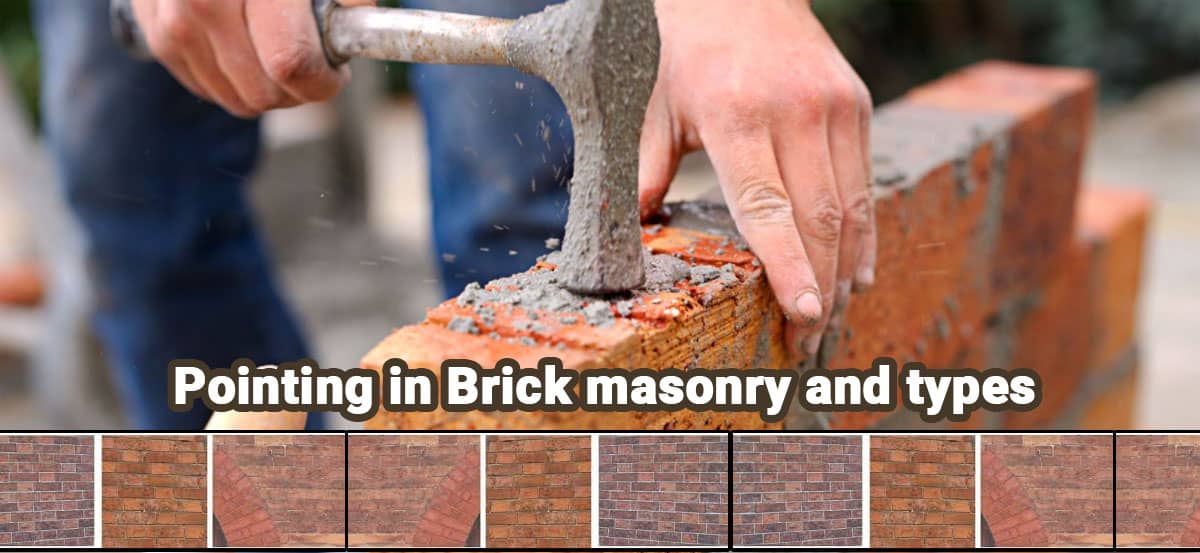Pointing in Brick masonry and types

The term pointing describes the final finish to mortar joints in stone masonry or brick masonry. Pointing is the process of implementing joints between 10 mm and 20 mm in the desired shape and filling them in with a higher quality mortar. As a result, Cement mortars and lime mortars are both used for pointing.
Types of Pointing in Brick Masonry
Flush Pointing
The process of flush pointing entails filling the mortar joints, removing the excess mortar, and making the joint flush with the face of the brick or stone masonry. Due to its durability and inability to accumulate dust, water, etc., this type of pointing is the most prevalent and widely used.
Struck Pointing
This type of point is struck in such a way that the upper edge of the point is pressed into the face of the point by 10mm. It is effective in disposing of water.
Beaded Pointing
Beaded pointing involves the use of a metal rod with concave edges to press green mortar into the raked mortar joints to create a bead. Despite its excellent appearance, this type of pointing is difficult to maintain as it is easily damaged.
Recessed Pointing
Recessed pointing entails filling the raked joints with mortar by using a suitable tool and pressing it to a depth of about 5 millimeters or more inside the surface of the walls. Keeping the pointer's face vertical in this case is important. Pointing in this manner is very pleasing to the eye.
Tuck Pointing
Tuck pointing means filling the joints between the rakes with mortar. Following this, the center of the joint is grooved with a depth of 3 mm and a width of 5 mm. Using white cement putty with a 3 mm projection, the groove is filled or tucked in.
Rubbed or Grooved or Keyed Pointing
Pointing that is rubbed, keyed, or grooved involves filling a raked joint with mortar and making the joint flush with the brick or stone masonry face, like flush pointing. This type of pointing differs from other types of pointing only by having a groove in the center formed by the pointer. Thus, it is known as grooved pointing. Grooved pointing has an attractive appearance, which makes it widely used.
V-Pointing
V-pointing involves filling the raked joint with mortar and forming a V-shaped groove. In this step, the flush-finishing face is formed with a V-groove.
Weathered Pointing
Weathered pointing is a type of pointing where a mortar is placed on top of a raked joint to create a V-shaped projection.
Surface Preparation for Pointing
Rainwater can enter walls through joints in exposed masonry as they are the weakest and most vulnerable places. As a result, a 20mm depth of raking is applied to the joints of masonry while the mortar is still soft. Clean the joints and surfaces thoroughly before thoroughly wetting them.
Pointing Methods
A small trowel is used to place mortar in joints carefully. Ideally, mortar placed in joints should have the desired shape. To ensure that new mortar is firmly bonded to old interior mortar, it should always be pressed hard for at least two seconds.
First-class brickwork should be used carefully to prevent the mortar from not covering the face edges. It is important to keep the pointed surface damp for at least a week after application or until it has been set.
For more information please watch the video
